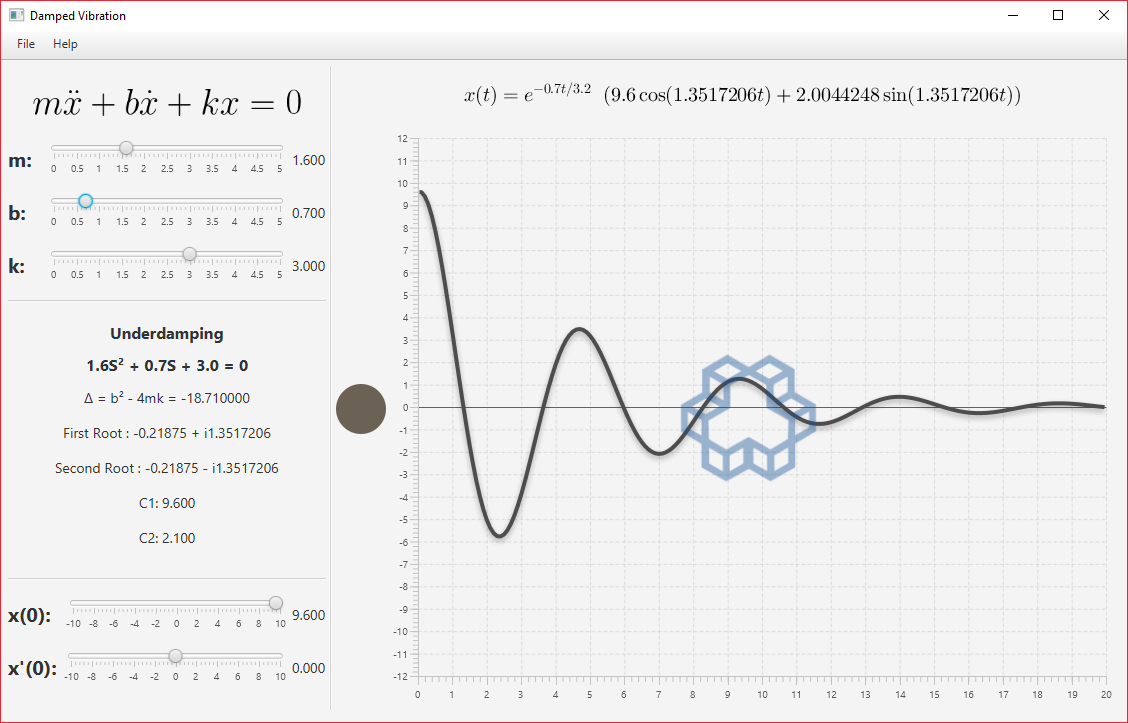Damped Vibration

Vibration is a mechanical phenomenon whereby oscillations occur about an equilibrium point.
The word comes from Latin vibrationem ("shaking, brandishing"). The oscillations may be periodic,
such as the motion of a pendulum—or random, such as the movement of a tire on a gravel road.
Vibration can be desirable: for example, the motion of a tuning fork, the reed in a woodwind
instrument or harmonica, a mobile phone, or the cone of a loudspeaker.
In many cases, however, vibration is undesirable, wasting energy and creating
unwanted sound. For example, the vibrational motions of engines, electric motors,
or any mechanical device in operation are typically unwanted. Such vibrations could
be caused by imbalances in the rotating parts, uneven friction, or the meshing of gear teeth.
Careful designs usually minimize unwanted vibrations.
Damped vibration: When the energy of a vibrating system is gradually dissipated by friction and other resistances,
the vibrations are said to be damped.
The vibrations gradually reduce or change in frequency or intensity or cease and the system rests in its equilibrium position.